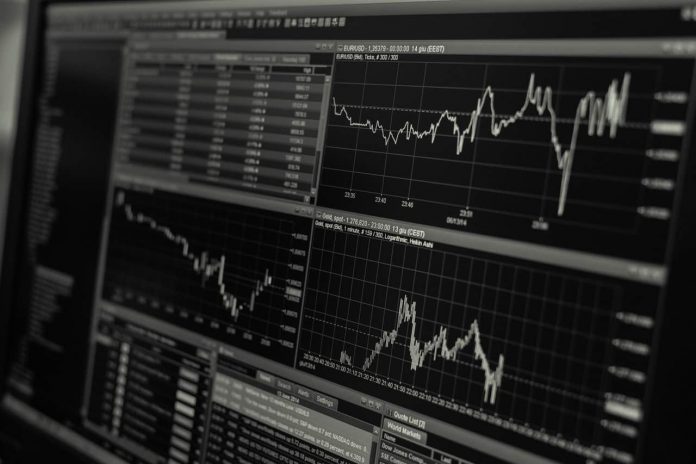The Malta Stock Exchange known in Maltese as “Borża ta’ Malta”, was set up in 1992. It has successfully fulfilled its role as an effective venue to raise capital finance. The Exchange is key player to the raising of capital for the private and public sector. The private sector raises capital through the issue of corporate bonds and equity. The Government of Malta raises capital through Malta Government Bonds and treasury bills. These are listed and traded on the secondary market.
“Il-Borża ta’ Malta” carries out this role by providing a structure for admission of financial instruments to its recognised lists. Which fall under a regulated framework that allows passporting within the EU. These instruments are traded on a regulated, transparent and orderly secondary market place. The main participants in a regulated market are issuers, stockbrokers and investors.
The Malta Stock Exchange (MSE) offers a comprehensive range of back–office services. These include maintenance of share and bond registers. Clearing and settlement and custody services through its Central Securities Depository situated in-house. It also has a link with Clearstream Banking. Located in Frankfurt, Germany and in Luxembourg to ease international access.
The investor base consists of over 75,000 individual investors. This is a significant number given Malta’s economic size (GDP €12,823 million in 2020) and population (441,543 in 2020). The focus is to continue to develop and support the domestic market. Whilst attracting international companies to list on the Exchange. With the aim of enjoying passport-ability within the EU. “Il-Borża ta’ Malta” invested in the use of technology and uses the Xetra trading platform.
The Malta Stock Exchange is an affiliate member of many leading standard-setting international organisations. Which specialize in capital markets and central securities depository operations. As a member it participates in regular meetings held by these organisations.
History of Malta Stock Exchange
The Malta Stock Exchange Act came into force in 1990. As a result the Malta Stock Exchange commenced its trading operations on 8th January 1992. The Central Bank of Malta was originally appointed as the supervisor of the Exchange. But it now falls under the supervision of the Malta Financial Services Authority (MFSA). Today it is a fully-fledged regulated market. Which executes its role as an effective venue to raise capital finance.
Located in the former Garrison Chapel building in Castille Square, Valletta. It began occupying this historic building since 1999. Built in 1857 on the designs of T. M. Ellis. This building served as a multi-denominational place of worship until 1950. Later it was used for entertainment purposes, as a post office and as a naval school. Before being acquired and renovated by the Exchange. “Il-Borża ta’ Malta” is located close to Auberge de Castille and the Upper Barrakka Gardens.
In 2013, the Exchange achieved the status of Designated Offshore Securities Market by the U.S. Securities and Exchange Commission. It had attained a similar recognition in 2005 from the HM Revenue and Customs UK.
Current Management
The Malta Stock Exchange is incorporated through the Memorandum and Articles of Association. As a shareholder of the company the Government of Malta appoints its Board of Directors. Composed of three members including the Chairman. The Board holds non-executive powers. Its main responsibility is to set out the strategy and policy of the Exchange.
The current Board Members are :
-
Mr Joseph Portelli, Chairman
-
Professor Joseph Falzon, Deputy Chairman
-
Mr Steven Tedesco, Director
-
Ms Marie Cordina, Secretary to the Board
At its discretion the Board may appoint an audit committee and a risk management committee . Which will exercise any powers and duties conferred to them by the Board.
Services of the Malta Stock Exchange
The Malta Stock Exchange provides the following services:
-
Admittance of financial instruments to listing on MSE’s main list or alternative companies list. This is subject to authorisation from the MFSA. Keep in mind that listed instruments have full passporting rights within the EU. So trading can take place on their own national exchange, within the EU, or on the Malta Stock Exchange.
-
Secondary market trading the majority being domestic trading on the Exchange’s Xetra platform. Operated from the Deutsche Börse, in Frankfurt.. It allows connectivity to the MSE by any of the 4,500+ traders. Who also connect to the Xetra platform around the world.
-
Central Securities Depository services (CSD). These are shareholder and bondholder register administration both for public and private companies. Clearing and settlement processing relating to the trading platform and custodial services. The CSD also offers registrar services in respect of IPOs.
-
Prospects, an SME-oriented capital market. Regulated by the MSE this market is a multilateral trading facility (MTF). Operated under a lighter regulatory framework. It allows SMEs in Malta and overseas to raise capital through equity or bond issues. It targets issues of under €5 million.
-
Institutional Financial Securities Market (IFSM), is the first Maltese wholesale securities market. The IFSM accepts asset backed securities, debt securities, insurance linked notes, convertible debt securities and derivative securities. Costs are reasonable. IFSM does it utmost to meet the needs of issuers and institutional investors.
Admission to Listing of Financial Instruments
The Malta Stock Exchange is Malta’s national numbering agency. So it is in charge of supplying ISINs for all securities issued in Malta.
Being listed on the Malta Stock Exchange makes companies noticeable to investors. It strengthens the corporate image through positive publicity. Since it is a regulated market it enhances investors’ confidence. Listing is a method of raising finance for companies projects. Malta’s Stock Exchange allows the following financial instruments to be listed. These being securities such as shares and bonds, as well as collective investment schemes.
The first step is for the prospective issuer to seek “Admissibility to Listing” from the MFSA. To be able to apply for admissibility you need to appoint a sponsor. The sponsor’s function is to lead the issuer through the listing and admission procedures. Once authorized the issuer may seek admission to any of the Malta Stock Exchange recognised lists.
The MFSA is responsible to issue the Capital Market Rules. Prospective issuers need to meet all the conditions listed in these Rules. One of which is that the sponsor and the directors of the applicant need to sign the application. Then the sponsor needs to submit this together with supporting documents. Once a financial instrument is granted admission, the issuer must ensure compliance with the continuing obligations and disclosure standards. As laid down in the Capital Market Rules and other relevant rules.
Admission to Listing of Collective Investment Schemes
Capital Market Rules regulate the admissibility to Collective Investment Schemes. These Rules issued by the MFSA. They cover the application process and continuing obligations.
Collective Investment Schemes can be incorporated in Malta or outside of Malta. They can be open-ended and close-ended. So admissibility can be to primary or secondary listing of units in both types of schemes irrespective of the country of incorporation. Different types of Collective Investment Schemes are governed by different continuing obligations. The Capital Market Rules provide the continuing obligations applicable to each respective scheme and the type of listing sought.
Application procedures include the appointment of a sponsor. Submit the completed signed admissibility application at least 5 days before the MFSA Listing Committee is to take place. The application must be accompanied by a prospectus. In case of a secondary listing the application must be accompanied by a supplementary prospectus applicable to Maltese investors.
As set out in the Capital Market Rules every scheme applying for authorisation is obliged to follow the continuing obligations and disclosure requirements.
Disclosure requirements and their detail depend on the structure of the scheme. Whether its a primary or secondary listing. These characteristics also effect whether the information is to be made public or not or whether a notification is to be made to the competent authority and/or Exchange.

Trading on the Malta Stock Exchange
The trading platform used by “Il-Borża ta’ Malta” is Xetra. This system operated by Deutsche Bõrse AG. Its trading performance is in line with international standards. Making it easier for international participation. All trades involving listed financial instruments taking place on the Exchange are performed through fund managers acting on behalf of their client instructions.
The Malta Stock Exchange aims to achieve the highest standards of market integrity. This applies to all the activities managed on its markets. To ensure suitable levels of investor protection. Among which are the following:
i. Application of clear and understandable bye-laws for trading of financial instruments.
ii. Suitable trading, settlement and clearing arrangements. For securities accepted for trading. In line with those required under European Law and European Directives.
iii. Pre and Post trade information on all financial insturments dealt on its market.
iv. Agreement by the MFSA of membership rules.
v. Constant tracking of the trading activity on its markets. Ongoing checks of member firms’ compliance with the trading procedures and applicable regulations. Monitoring in relation to the Prevention of Financial Markets Abuse Act Cap.476. And the Prevention of Money Laundering Act Cap.373 of the Laws of Malta.
vi. Daily reporting of all executed trades to the MFSA on its market and on the off-exchange market. Reporting of any suspicious transactions.
Malta Stock Exchange Trading Hours
The Malta Stock Exchange is open for trading from Monday to Friday. From 9:30am to 3:30pm Central European Standard Time (GMT+01:00). It has an all markets pre-trading session from 9:00am to 9:30am and post-trading session from 3:30pm to 4:00pm. Trading of Treasury Bill is different. The pre-trading session starts from 9:00am to 9:30am and continuous trading session is from 9:30am to 10:30am.
Malta Stock Index
The Malta Stock Exchange index is a capitalization weighted index. It comprises all shares traded on the stock exchange. The index is equal to the current market value of all listed shares. On 27th December 1995 the index was set up with a base value of 1000. Then as from 19th May 1998 the index started to be computed on a daily basis. The Malta Stock Exchange produces two indices. These being the MSE Equity Price Index and the MSE Equity Total Return Index.
The MSE Equity Price Index is a price return index. It records the changes in the prices of the index components. The MSE Equity Price Index ranks companies according to their market capitalisation. In consequence movements in the prices of larger capitalised companies have a substantial affect on the performance of the index. Than similar changes in smaller companies.
The MSE Equity Total Return Index is also weighted according to the market capitalisation. This index encompasses the price fluctuations of its components and distributed dividends. It assumes that all distributed dividends are reinvested into the company paying the dividend on the day it turns ex-dividend.
Since computation commenced the MSE Equity Price Index gave rise to a compound annual growth rate (CAGR) of 5.7 per cent. The MSE Equity Total Return Index brought about a CAGR of 8.7 per cent.




